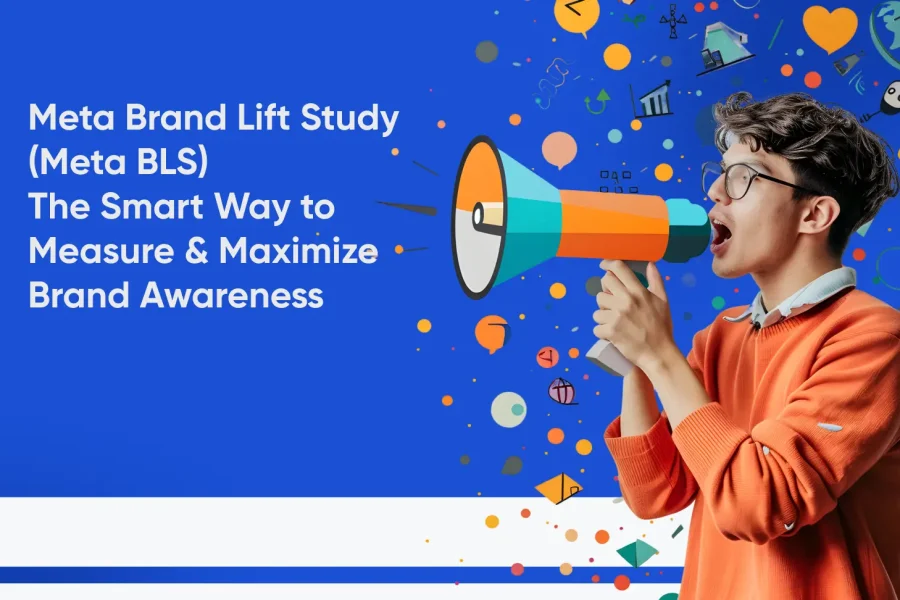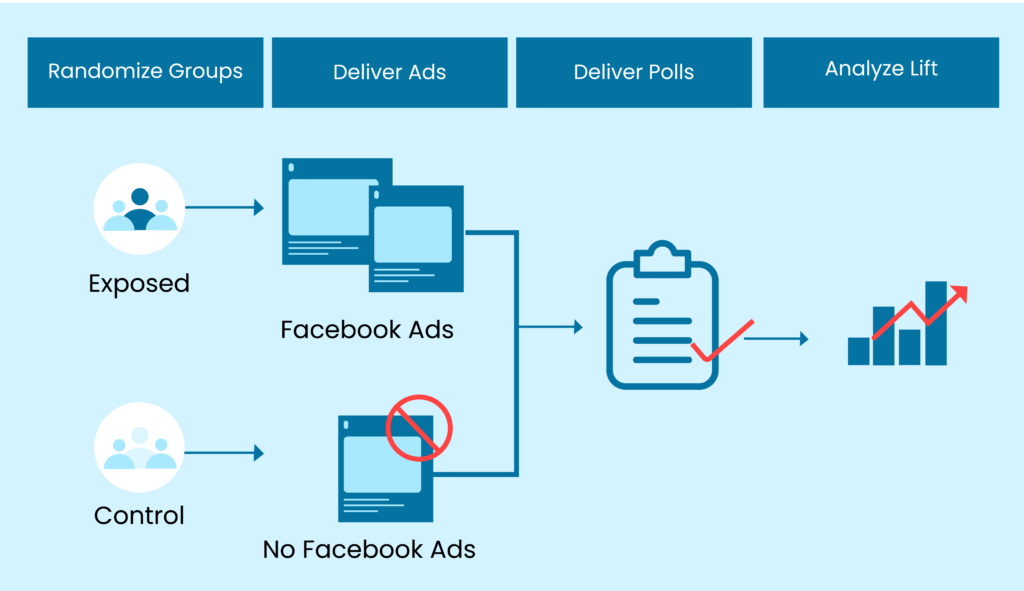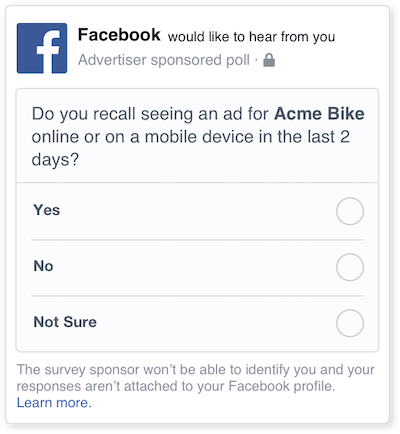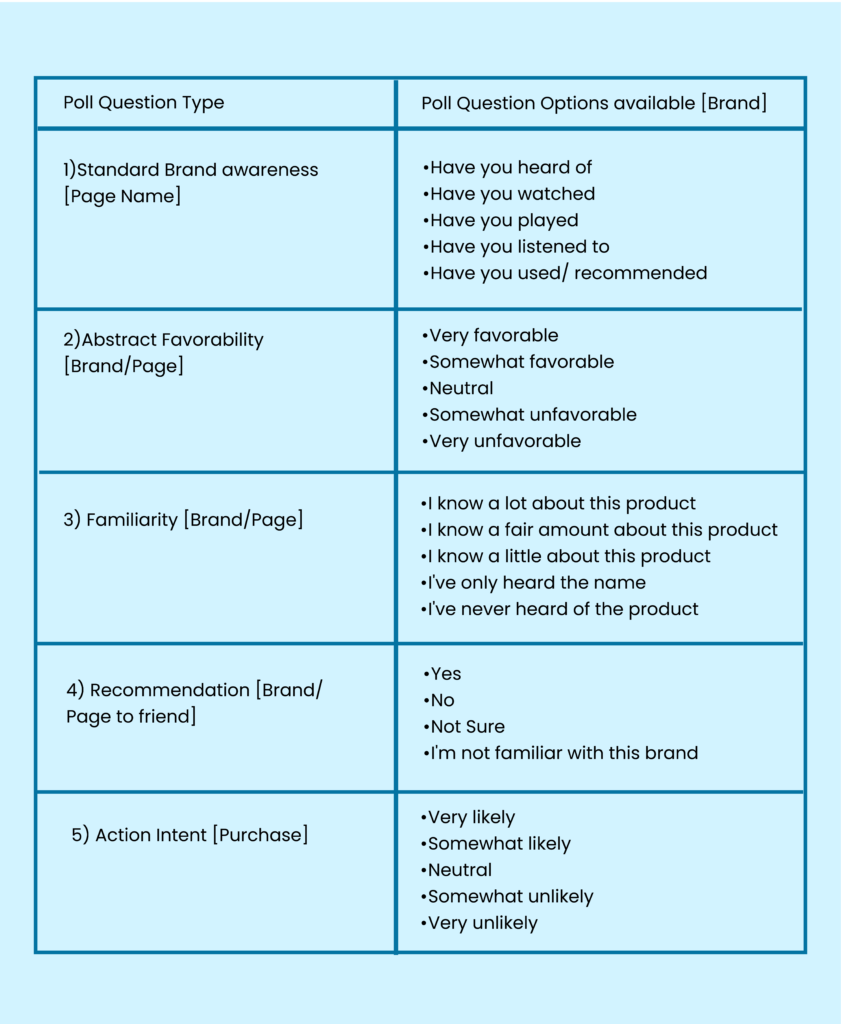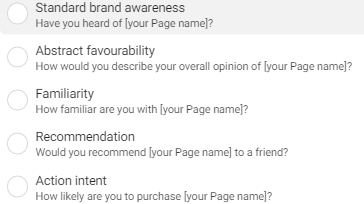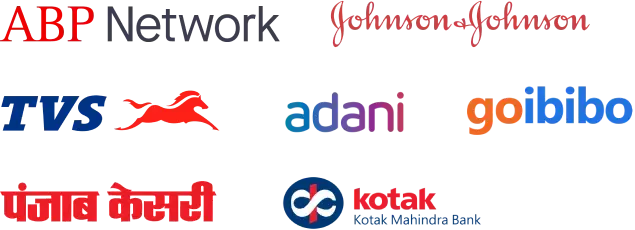Do you really think Meta Brand Lift Study (Meta BLS) in really significant in 2025??
In today’s increasingly competitive digital landscape, branding has become a non-negotiable pillar of marketing strategy. For companies aiming to secure a prominent spot at the top of the marketing funnel (TOFU), brand awareness is more critical than ever. A strong brand presence not only drives long-term customer loyalty but also significantly influences early-stage consideration. However, a major concern still persists: how do you quantify the real impact of branding campaigns?
Despite high impression volumes, many advertisers hesitate to allocate large budgets to brand awareness or traffic-driven campaigns. The core issue? These campaigns often lack clear, measurable outcomes. Unlike conversion-focused campaigns that deliver hard metrics like revenue, leads, and Return on Ad Spend (ROAS), branding efforts are often judged based on ambiguous engagement signals leaving marketers without concrete evidence of success.
This measurement gap has prompted Meta (formerly Facebook) to innovate in this space. Enter the Meta Brand Lift Study (Meta BLS): a powerful research tool designed to help advertisers accurately gauge the effectiveness of their awareness-driven campaigns. Available under Meta’s “Experiments” feature in Ads Manager, the brand lift study enables businesses to assess the incremental impact of their ad campaigns on key metrics such as brand awareness, ad recall, favorability, consideration, and purchase intent.
What makes the Meta Brand Lift test especially valuable in 2025 is its alignment with performance marketing expectations. It offers advertisers a way to blend the science of data-driven marketing with the art of brand storytelling, delivering actionable insights into how campaigns are shaping consumer perception — not just behavior.
As marketers and decision-makers look for more intelligent, ROI-backed strategies in 2025, the brand lift study by Meta stands out as an essential tool. Whether you’re launching a new product, strengthening brand equity, or optimizing top-of-funnel activities, understanding how audiences perceive your brand can help you fine-tune messaging, creative, and targeting for better long-term outcomes.
In this guide, we’ll dive deeper into how the Meta Brand Lift Study works, eligibility requirements, poll design best practices, and how you can interpret the results to supercharge your brand marketing efforts.
What is Meta Brand Lift Study (Meta BLS) in 2025?
The Facebook Brand Lift Study, now widely recognized as the Meta Brand Lift Study (Meta BLS), is a robust experimental measurement solution that allows advertisers to precisely evaluate the incremental impact of their brand campaigns across the Meta ecosystem including Facebook, Instagram, and Audience Network.
By leveraging randomized control trials (RCTs), the Meta brand lift study isolates campaign performance from external factors, giving marketers a clear, data-driven view of brand perception shifts caused directly by their ads.
In 2025, Meta BLS plays a pivotal role in upper-funnel measurement, helping brands quantify lift in awareness, ad recall, favorability, consideration and even purchase intent, insights that are critical in today’s privacy-first, cookie-less digital landscape.
Whether you’re running a single campaign or a multi-channel branding initiative, the brand lift study offers actionable intelligence to guide creative, budget, and audience strategy.
In 2025, the Meta BLS has evolved to help brands go beyond vanity metrics like impressions or reach. Instead, it focuses on brand-specific KPIs such as:
- Brand Awareness
- Ad Recall (Video Recall)
- Brand Favorability
- Consideration
- Purchase Intent
These insights are gathered using poll-based experiments that compare a test group (people who saw your ad) with a control group (people who didn’t). By analyzing the responses to targeted survey questions, marketers can determine the incremental lift in perception caused directly by their advertising efforts.
How the Meta Brand Lift Study Conducted?
The brand lift study can be conducted using either:
- A single campaign, or
- Multiple campaigns running under the same ad account
However, to ensure the reliability and consistency of results, it’s essential that all selected campaigns:
- Share a consistent creative theme,
- Deliver uniform messaging, and
- Target a similar audience segment
This consistency ensures that participants aren’t confused by varied visuals or messages, something that could bias results and reduce the accuracy of your brand lift measurement.
Once your campaigns go live, Meta automatically divides the audience into test and control groups using randomized control trial (RCT) methodology. While the test group sees your ads, the control group does not. Meta then delivers in-feed surveys to both groups with custom questions aligned to your brand objectives such as brand awareness, ad recall or purchase intent.
In 2025, Meta BLS uses advanced AI-driven audience segmentation and dynamic sampling to optimize poll delivery, ensuring better response quality and faster turnaround on lift metrics across diverse verticals and regions.
Why Meta Brand Lift Studies (Meta BLS) Matters in 2025
With the decline of third-party cookies and growing emphasis on privacy-first advertising, marketers now face greater pressure to quantify success in brand building without relying solely on tracking-based performance metrics.
This is where Meta BLS delivers immense value:
- It helps marketers scientifically validate the effectiveness of brand awareness efforts.
- It enables data-backed storytelling to internal stakeholders.
- It uncovers which creative elements are resonating most with your audience.
- It guides future campaign optimizations for stronger upper-funnel performance.
In an era where consumer trust and emotional connection play a critical role in conversion, measuring brand lift is not just a nice-to-have, it’s a strategic imperative.
Can Brand Lift Studies Be Conducted in India in 2025?
Yes, Brand Lift Studies—now known as Meta Brand Lift Studies (Meta BLS) can effectively be conducted in India, provided that specific eligibility criteria are met. Meta has outlined minimum budget thresholds per country, including India, to ensure the studies yield statistically significant and actionable results.
These benchmarks are based on Meta’s internal algorithms and data analysis, which determine the minimum number of impressions and survey responses needed to measure lift with confidence.
For campaigns running in India, the updated requirements in 2025 are as follows:
- Minimum Budget: USD 15,000 (or its equivalent in INR)
- Primary Language for Polls: English (EN_US)
- Target Audience Age: 18 years and above
Advertisers in India must meet or exceed this budget threshold per brand lift test to activate the feature within Meta’s Experiments or Test & Learn framework. If the budget criteria aren’t met, Meta disables the option to launch a brand lift study for that campaign.
This budget ensures the sample size is large enough for Meta’s platform to deliver meaningful insights—whether you’re measuring brand awareness, ad recall, favorability, or purchase intent.
Pro Tip: If you’re running a multi-region campaign with India included, each region’s respective budget must independently meet Meta’s minimums to allow proper audience segmentation and response analysis.
Conducting a Meta brand lift study in India is an excellent way for brands to understand how their messaging resonates with Indian consumers—especially in a complex and mobile-first market where traditional brand tracking often falls short.
How the Meta Brand Lift Study (Meta BLS) Works in 2025
The Meta Brand Lift Study (formerly Facebook Brand Lift Study) is a scientifically backed methodology designed to isolate and measure the true incremental impact of brand campaigns across Meta platforms including Facebook, Instagram, and the Audience Network.
Here’s the Step-by-Step Process How Meta Brand Lift Study (Meta BLS) Works
Step 1: Audience Segmentation (Control vs. Test Group)
The first step in a Meta brand lift study is the randomized division of your selected audience into two statistically equivalent groups:
- Test Group: This group is exposed to your advertising campaign.
- Control Group: This group does not see your ads, but is otherwise similar in demographics and behavior.
This setup ensures that any difference in brand perception between the two groups can be directly attributed to your ad campaign—not external variables. Meta’s advanced algorithm handles this segmentation automatically, preserving experimental integrity.
Step 2: Survey Deployment
Once the campaign is live, Meta begins delivering in-feed poll questions to both groups.
These are typically one-question surveys tailored to the advertiser’s brand objectives, such as:
- “Do you recall seeing an ad for [Brand] recently?”
- “How likely are you to consider [Product] for your next purchase?”
Each question comes with multiple-choice responses, and users’ answers help Meta calculate key brand metrics like ad recall, brand awareness, favorability, consideration, and purchase intent.
Note: To ensure data accuracy, the study must run for a minimum of 14 days.
Step 3: Measuring Incremental Lift
Throughout the campaign, Meta records all survey responses and tracks user behavior. Unlike simple A/B testing, Meta BLS employs a randomized control trial (RCT) framework to assess the incremental lift i.e., how much more likely someone is to remember or favor your brand because of seeing the ad.
This is key to understanding true advertising impact and filtering out any noise from other marketing channels or organic brand activity.
Step 4: Insights & Reporting
At the end of the campaign duration, Meta delivers a comprehensive report comparing the responses and behaviors of the test and control groups.
This includes:
- Percentage point lift in brand awareness or ad recall
- Statistical significance of the results
- Actionable insights on what’s working and what needs improvement
This final step allows advertisers to determine the effectiveness of their brand messaging and optimize future campaigns accordingly.
In 2025, the Meta brand lift study remains one of the most reliable tools for advertisers to quantify the real-world impact of brand campaigns in a privacy-safe, scientifically valid way.
What Type of Questions Should Be Chosen for the Meta Brand Lift Study (Meta BLS) in 2025?
When setting up a Meta Brand Lift Study (Meta BLS) in 2025, choosing the right set of questions is critical to accurately measure the true impact of your brand campaign. These questions help advertisers determine how their target audience perceives and remembers their brand, messaging, and offerings across Meta platforms like Facebook, Instagram, and Audience Network.
Meta allows advertisers to select up to three questions during the setup of a brand lift study, depending on their campaign goals and optimization events. These questions are shown as in-feed polls to both test and control groups and are tailored to evaluate key brand metrics.
Below are some recommended types of Meta BLS questions, aligned with specific brand objectives:
1. Brand Awareness
This measures whether people are familiar with your brand after being exposed to your campaign.
Sample Question:
“Have you heard of [Brand Name] in the past few days?”
This helps assess general recognition and mindshare, especially for new brand entrants or rebranding initiatives.
2. Brand Recall / Ad Recall
This measures whether users can recall seeing your ad specifically on Meta platforms.
Sample Question:
“Do you remember seeing an ad for [Brand/Product] on Facebook or Instagram in the past 7 days?”
This is ideal for video and display campaigns where visibility and recall are key performance indicators.
3. Brand Association or Reminder Messaging
This gauges whether your brand is top-of-mind when associated with a specific keyword, emotion, or context.
Sample Question:
“What product or brand do you associate with the phrase ‘2 minutes’?”
These questions help uncover how well your campaign has linked your brand to a specific identity, concept, or value.
4. Consideration & Favorability
These questions assess the likelihood of a user considering your brand over competitors or their favorability toward it.
Sample Question:
“How likely are you to consider [Brand/Product] for your next purchase?”
Use this if your objective is to shift perceptions or move users down the funnel toward intent.
5. Purchase Intent
This helps measure the final influence of your campaign in motivating users to act.
Sample Question:
“How likely are you to purchase [Brand/Product] in the near future?”
These questions are especially useful for evaluating the impact of promotional or launch campaigns on driving sales.
Final Tips for Meta BLS Questions in 2025:
- Keep your questions clear, concise, and unbiased
- Choose questions that align directly with your campaign objective
- Ensure the creative messaging matches the question’s intent to maximize accuracy and response relevance
- Remember that results from Meta BLS questions are statistically analyzed to show incremental lift compared to the control group
By crafting thoughtful and strategic Meta Brand Lift Study questions, advertisers can generate powerful insights that go far beyond impressions or clicks measuring real changes in consumer perception, behavior and intent.
How Do I Measure Brand Lift in Meta Ads?
A Step-by-Step Guide to Brand Lift Study (Meta BLS) in 2025
Measuring brand lift is crucial for advertisers who want to understand the true impact of their campaigns beyond clicks and impressions. Meta’s Brand Lift Study (Meta BLS) provides an industry-leading, data-driven way to quantify how your Facebook and Instagram ads influence brand awareness, favorability, recall, and purchase intent.
Here’s How You Can Accurately Measure Brand Lift Using Meta’s Tools in 2025:
Step 1: Access Brand Lift Study via Meta Business Manager
Start by logging into your Meta Ad Manager. Navigate to the ‘Test and Learn’ section where the Brand Survey or Brand Lift Study option is available at the account level. This centralized tool helps you design, launch, and monitor your brand lift experiments with ease.
Step 2: Set Eligibility Criteria and Budget
Before launching your Meta Brand Lift Study, define your campaign’s eligibility criteria including:
- Minimum campaign budget (as per Meta’s 2025 guidelines)
- Target audience demographics and location
- Campaign objective aligned with brand lift goals (e.g., awareness, consideration)
Meta’s internal algorithms recommend minimum spend thresholds to ensure the survey reaches enough people for statistically significant results, especially in markets like India and the US.
Step 3: Exclude Brand Lift Audiences from Active Campaigns
To maintain unbiased, reliable data, exclude your brand lift study audience from any other active Facebook campaigns during the test period—and for 28 days after completion. This prevents audience overlap and ensures the study accurately isolates your campaign’s incremental impact.
Step 4: Align Poll Questions with Business Goals
Clear business objectives are essential. Customize your Meta BLS poll questions to directly reflect what you want to measure—whether that’s brand awareness, ad recall, favorability, or purchase intent. The closer the poll questions align with your goals, the more actionable the insights.
Step 5: Determine Test Duration and Maintain Campaign Stability
The recommended duration for a Meta Brand Lift Study is between 2 weeks and 90 days. During this test period, it’s important to keep your campaign active and avoid making changes to targeting, creatives, or budget. Consistency ensures the accuracy and reliability of your results.
Step 6: Customize Brand Lift Study Settings
Meta allows you to set up brand lift studies at multiple levels, including:
- Account level
- Campaign level
- Campaign Group level
You can also customize:
- Geographic region(s)
- Vertical or industry
- Language preferences (ensure campaign and poll question languages match exactly)
- Poll content focus areas such as awareness, favorability, familiarity, recommendation, or recall
Available Poll Question Types in Meta Brand Lift Study
To maximize the effectiveness of your brand lift measurement, choose from Meta’s predefined poll question types that match your campaign’s core objectives.
Examples include:
- Brand Awareness: “Have you heard about our brand recently?”
- Ad Recall: “Do you remember seeing our ad in the last 7 days?”
- Favorability: “How favorable is your opinion of our brand?”
- Purchase Intent: “How likely are you to purchase our product in the near future?”
Key Best Practices for Measuring Brand Lift in 2025
- Ensure consistency between the language of your ads and the poll questions.
- Target an audience aged 18 years and above to comply with Meta’s study criteria.
- Avoid overlapping campaigns that target the same audience to reduce data bias.
- Regularly review Meta’s updated guidelines for minimum budget and audience size to ensure eligibility.
By following these steps, advertisers can leverage the Meta Brand Lift Study (Meta BLS) to gain invaluable insights into how their campaigns influence consumer perception and behavior empowering smarter budget allocation and optimized marketing strategies in 2025.
Best Practices for Creating a Brand Survey Test in Meta Brand Lift Study (Meta BLS): 2025 Guide
Conducting a successful Meta Brand Lift Study (Meta BLS) requires careful planning and adherence to best practices that align your brand survey with your advertising goals.
Below are key strategies to ensure your brand lift tests deliver meaningful, actionable insights:
1. Align Brand Survey Questions with Your Advertising Objectives
Choosing the right poll questions is crucial for the effectiveness of your brand lift study.
Always tailor your Meta BLS questions to directly reflect your campaign’s objectives:
- For Top of Funnel (TOFU) goals like brand awareness, use questions focused on ad recall, brand recognition, and favorability.
- For Middle of Funnel (MOFU) and Bottom of Funnel (BOFU) objectives, focus on purchase intent, consideration, and recommendation to understand deeper engagement.
It is essential that your ads prominently showcase your brand name, logo, or unique value proposition to ensure survey respondents can correctly attribute their answers to your brand. Meta recommends displaying your official Page name clearly in the ad creative since the Page name becomes subject to Meta’s AD Policies during the brand survey. If the Page name violates these policies, the Meta Brand Lift Study may be disqualified or restricted.
2. Set Up a Dedicated Campaign Specifically for Brand Lift Testing
Meta strongly advises launching a new campaign specifically for your brand lift study rather than increasing the budget of an ongoing or older campaign. Testing on an existing campaign risks capturing only a portion of the campaign’s impact, which can lead to skewed or incomplete results.
Additional considerations include:
- Ensure your target audience is 18 years or older, as Meta’s brand lift surveys do not poll respondents under 18.
- Set an appropriate minimum budget based on your country or region to meet Meta’s thresholds for statistically valid data.
- Avoid running multiple brand lift tests simultaneously on the same campaign; this preserves the scientific integrity and accuracy of your Meta BLS results.
3. Schedule Your Brand Lift Study Thoughtfully for Reliable Insights
A well-planned campaign schedule is essential. Meta recommends running your brand lift study campaign for a minimum of two weeks to gather sufficient data. For more robust insights, especially in markets with lower engagement, extending the test up to four weeks or even 90 days can help you reach at least 500 survey responses, the benchmark for statistically significant results.
Your brand lift test schedule should align perfectly with the live dates of your ad campaigns to ensure survey responses reflect actual exposure. Also, consider external factors that could impact survey results, such as:
- Seasonal ad competition during holidays
- Periods of unusually high marketing spend by competitors
- Market fluctuations or special events impacting audience behavior
Meta recommends conducting brand lift tests under typical advertising conditions to yield the most practical, reliable insights for your marketing strategy.
Summary of Key Best Practices for Meta Brand Lift Study in 2025
Best Practice |
Description |
|---|---|
| Align Poll Questions with Objectives | Choose questions based on TOFU, MOFU, or BOFU goals |
| Highlight Brand Identity | Prominently feature brand name/logo in ad creative |
| Use Dedicated New Campaigns | Avoid testing on older or multi-use campaigns |
| Target Audience 18+ | Ensure survey respondents meet age requirements |
| Set Appropriate Budgets | Follow regional minimum spend guidelines |
| Maintain Campaign Schedule | Run tests for 2-90 days, matching campaign timeline |
| Avoid Concurrent Tests | Don’t test the same campaign in multiple lift studies |
| Consider External Market Factors | Schedule during typical market activity for valid data |
By following these best practices for your brand lift study, you maximize the potential of Meta’s powerful tool to reveal true brand impact, boost marketing ROI, and fine-tune your advertising strategies in 2025.
What Results Will an Advertiser Receive from Meta Brand Lift Study (Meta BLS) in 2025?
A Meta Brand Lift Study (Meta BLS) provides powerful, data-driven insights that help advertisers assess how their ads influence brand perception, awareness, and purchase intent. Understanding the outcome of your brand lift study is crucial for refining campaign strategy and maximizing ROI.
When Can You Expect the Results?
According to Meta’s 2025 guidelines, initial results begin populating once your brand survey has received a minimum of 250 completed responses. However, for more comprehensive analysis, the full Brand Lift Study report is delivered within 10 business days after the test concludes.
What Does the Meta BLS Report Include?
Once the study ends, advertisers receive a detailed presentation/report featuring:
-
Campaign Performance Overview:
A full breakdown of the campaign’s reach, frequency, and poll response metrics, along with the brand lift impact observed.
-
Demographic-Wise Breakdown:
Insights segmented by gender, age, region, and device type to show how different audience groups responded to the campaign.
-
Industry-Specific Benchmarks:
Meta compares your campaign results against industry benchmarks within your vertical and regional context to help contextualize performance.
-
Winning Poll Responses:
Detailed analytics on how users responded to each of the Meta BLS questions (e.g., ad recall, brand awareness, consideration).
-
Actionable Recommendations:
Data-backed suggestions to help advertisers improve future campaign strategy, creative design, and audience targeting for better lift.
Why These Insights Matter
The ultimate goal of the Meta brand lift study is to determine if the test group (those exposed to the ad) shows statistically significant improvement in brand metrics when compared to the control group (unexposed). By comparing these two groups, advertisers can isolate the true impact of their advertising efforts.
Moreover, budget concerns should not deter advertisers—in many cases, the ad spend already allocated for ongoing marketing campaigns is sufficient to run a successful brand lift study. The insights gained far outweigh the cost, offering clarity on your brand’s position and informing smarter marketing and business strategies moving forward.
Final Thoughts
Investing in a Meta Brand Lift Study is more than just measuring performance—it’s about uncovering how your advertising is actually perceived by real audiences. With customized polling, industry benchmarks, and targeted recommendations, Meta BLS empowers brands to refine their strategy and build stronger connections with their audience in 2025 and beyond.


